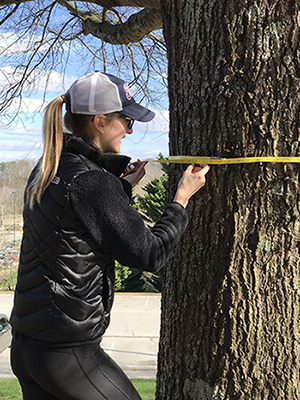Interactive Arboretum Experience Coming to Southern
 Biology students at Southern have worked for the past year and a half to identify,
locate, measure, and tag tree species on campus. The project, headed by the Biology
Department and Landscape Services, received external funding through the university’s
Campaign for Excellence in Faith and Learning, allowing students to earn credit while
working as they contribute to a bigger cause—the establishment of an arboretum on
campus.
Biology students at Southern have worked for the past year and a half to identify,
locate, measure, and tag tree species on campus. The project, headed by the Biology
Department and Landscape Services, received external funding through the university’s
Campaign for Excellence in Faith and Learning, allowing students to earn credit while
working as they contribute to a bigger cause—the establishment of an arboretum on
campus.
According to the Merriam-Webster Dictionary, an arboretum is “a place where trees, shrubs, and herbaceous plants are cultivated for scientific and educational purposes.” Southern’s arboretum will primarily be located in the central part of campus in order to be easily accessible to both students and the community. In addition to tagging existing trees, the team is also planting new species.
“This project will help us develop a horticultural plan and increase the diversity of the trees we see on campus,” said Ben Thornton, PhD, biology professor and co-orchestrator of the project. “We want to create a place where community groups can come on campus and have an interactive experience with trees.”
Part of that interactive experience will include QR codes that will be placed on tree tags, leading users to a series of photos and diagnostic characteristics of the different tree species.
At this stage, having tagged each of the 1,100 trees in the designated area, students are using high-precision GPS technology to capture coordinates for each tree. By the end of the school year, the data will be translated into maps that allow users to explore the different types of trees and see the exact location of the various species on campus. As of March, there have been 76 different species identified.
Eventually the arboretum will expand to include part of the university’s extensive trail system as well. Along the trails in Fenton Forest, the team will tag trees with QR codes that are slightly different than those in the center of campus. By scanning the code, the user will be prompted to guess the species of the upcoming tree; the answer will be revealed on that tree, creating a fun, interactive activity that anyone can take part in.
Students who have worked on the project, such as sophomore biology major Vanessa Gonsalves, are appreciative of the learning opportunity they have had.
“This project has changed the way I look at trees on campus,” Gonsalves said. “I hope that others will be able to make good memories using the arboretum, the same way that I have.”